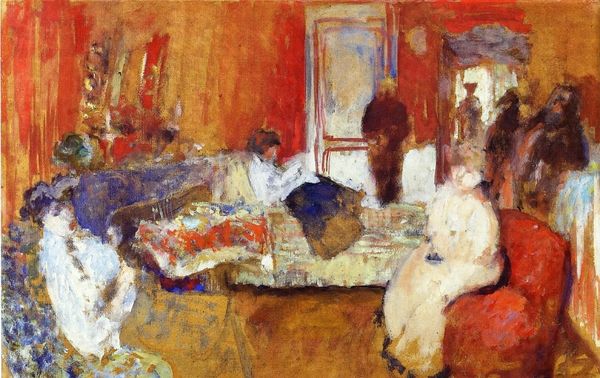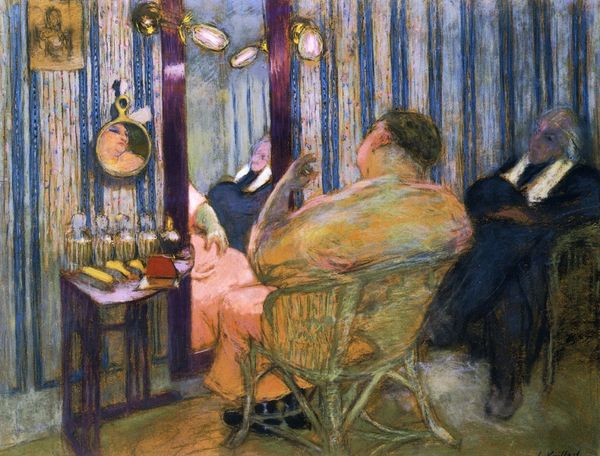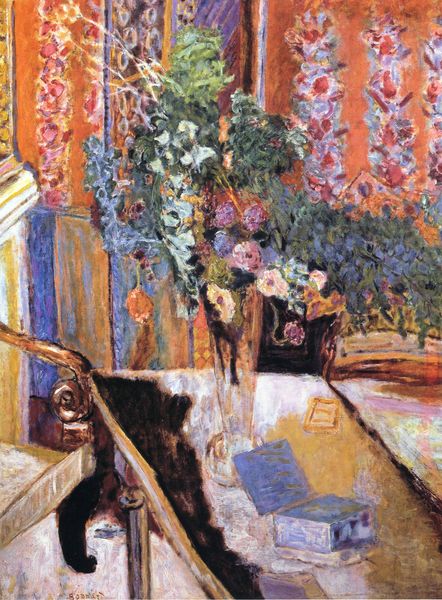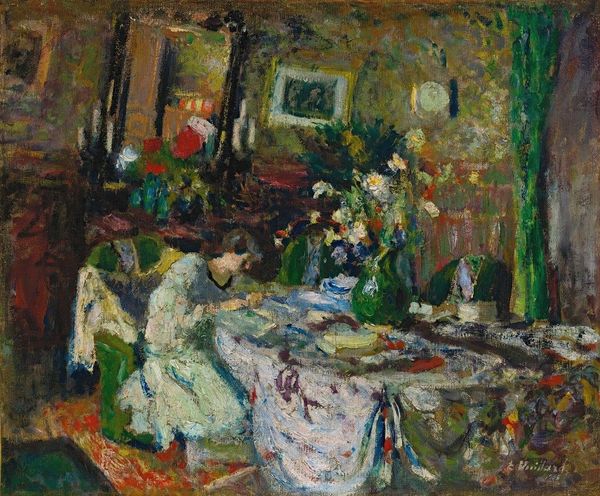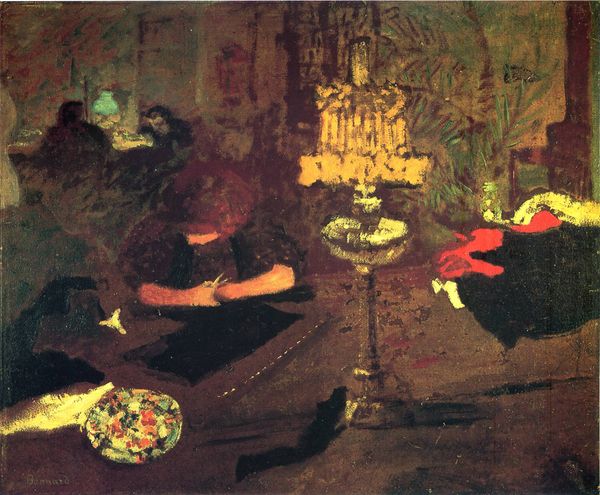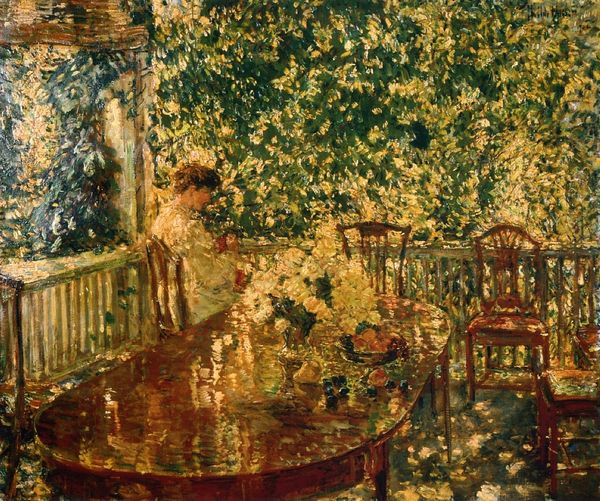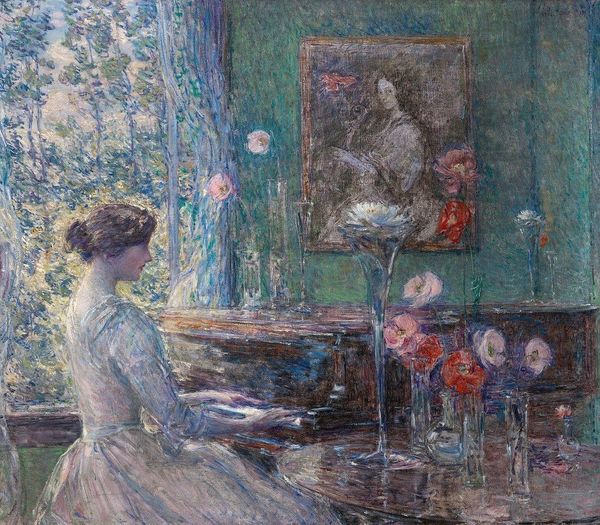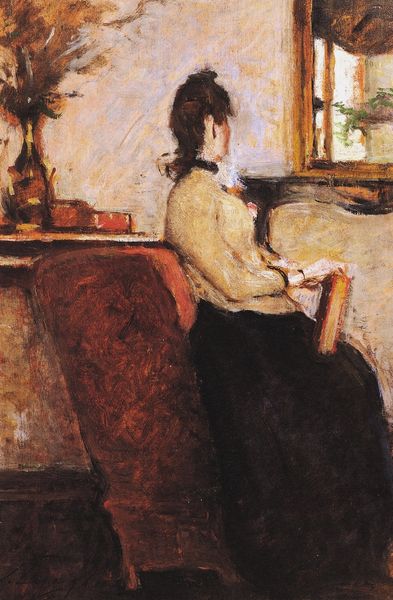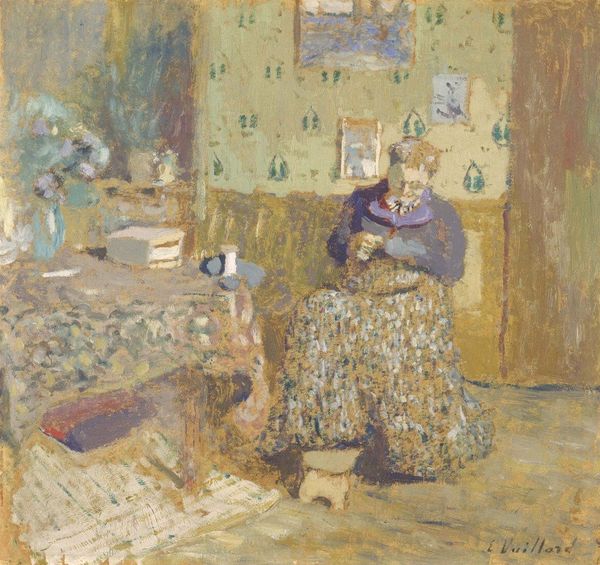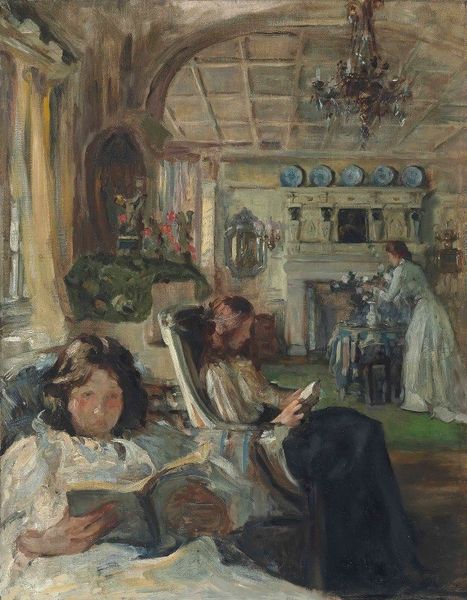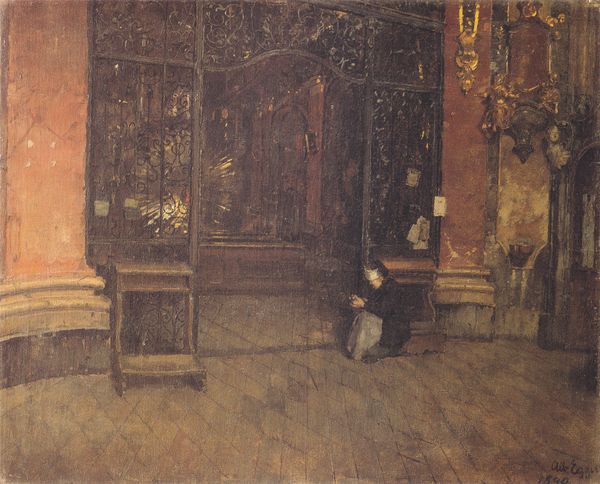
Dimensions: 56 x 52 cm
Copyright: Public domain
Curator: We are looking at "The Salon of Madame Aron," painted by Édouard Vuillard in 1912. It is an oil-on-canvas group portrait, an intimate glimpse into bourgeois life. Editor: Mmm, my first impression is a curious mix of cozy and claustrophobic. Like being wrapped in a velvet blanket, but in a room filled to the brim with overstuffed furniture. Curator: Vuillard, aligned with the Post-Impressionists and known for Intimism, was deeply engaged with depicting private, domestic settings. He wasn't merely capturing reality but reflecting on social codes of behavior within interior spaces. Notice the loose brushstrokes. Editor: True, it’s almost dreamlike! The lack of sharp lines makes the figures blend with the surrounding decor. It feels as though the people and the wallpaper are all part of one unified, textured skin, buzzing like an afterimage. Is it meant to feel staged, somehow? Curator: Well, the painting's staging definitely contributes to that sentiment. This particular genre scene reveals the importance of salons like Madame Aron’s for intellectual and artistic exchange. But it wasn’t merely free flowing discussion! Social dynamics shaped how such spaces operated. Vuillard is making a point of that, I think. Editor: I see that! They seem more like specimens pinned under glass than people engaging in heartfelt exchange! Though I do sense some ironic warmth in Vuillard's playful manipulation of color here— all the soft shades bouncing off one another. And those gorgeous swathes of saturated hues, especially in the patterned clothing of that lady on the divan. It hints at an escape from boredom. Curator: And you find escape from boredom where? I'd say those patterns suggest their own sort of cage! But still, the appeal is obvious— the painting invites us to consider how societal expectations played out within these meticulously arranged rooms. And perhaps it asks the question, What are they actually talking about?! Editor: Touché. Well, I see a reflection of our present struggle to define authenticity and connection amidst artifice and distraction. Curator: That's an insightful connection to contemporary concerns! I see now why you were so interested in that particular application of impasto, because in those rich, swirling surfaces we may actually come closest to grasping the artist’s deeper critical reflections on this privileged world.
Comments
No comments
Be the first to comment and join the conversation on the ultimate creative platform.

